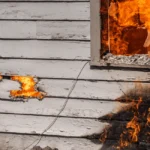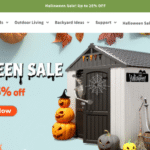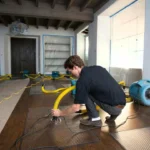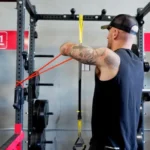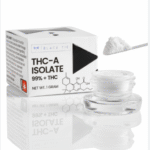Integrated pest management (IPM) is an essential approach for sustainable pest control that combines various strategies to manage pests effectively while minimizing risks to human health and the environment.
Focusing on long-term prevention and reducing reliance on chemical treatments can enhance the health of your gardens and ecosystems. This method addresses current pest issues and prevents future outbreaks by carefully monitoring pest populations and using environmentally friendly solutions.
You may wonder how IPM can be applied in different settings, from home gardens to large agricultural operations. It involves understanding the life cycles of pests, promoting beneficial organisms, and employing physical, cultural, and biological controls. By integrating these practices, you can create a more balanced and resilient ecosystem that supports plant health.
As you explore integrated pest management, you’ll discover practical tips and strategies to implement this holistic approach in your everyday life. Whether dealing with stubborn pests in your garden or looking for ways to protect your indoor spaces, IPM provides the tools for effective and responsible pest control.
Principles of Integrated Pest Management
Integrated pest management (IPM) involves a combination of practices designed to manage pests effectively while minimizing risks to people, property, and the environment. Key principles include accurately identifying pests, employing preventive measures, and utilizing biological control methods.
Pest Identification and Monitoring
Accurate pest identification is crucial for effective IPM. You must recognize the specific pests targeting your plants or crops to determine the best management practices. Use tools such as sticky traps or visual inspections to monitor pest populations.
Regular monitoring helps assess pest populations and understand their life cycles, enabling timely interventions. Consider setting action thresholds to guide your decisions on when to manage pest populations. Effective identification and monitoring equip you to implement targeted strategies, reducing unnecessary pesticide use.
Preventive Cultural Practices
Preventive cultural practices form the foundation of IPM strategies. Proper irrigation, fertilization, and sanitation ensure healthy plants. Practices like crop rotation can disrupt pest life cycles, reducing pest establishment.
Select pest-resistant plant varieties and adjust planting times to avoid peak pest seasons. Establishing beneficial habitats, such as diverse plantings, attracts natural predators contributing to pest control. Implementing these preventive measures creates an environment where pests struggle to thrive.
Biological Control Methods
Biological control methods involve managing pest populations using natural enemies, such as predators, parasitoids, and pathogens. You can also introduce beneficial insects, like ladybugs or lacewings, that feed on common pests.
Another effective approach is to utilize microbial agents, such as Bacillus Thuringiensis, which target specific pests without harming beneficial organisms. Understanding ecological interactions helps you harness these natural control methods effectively. By fostering an ecosystem that supports these beneficial organisms, you enhance the resilience of your crops against pest pressures.
Integrated Pest Management in Home Care
Effective integrated pest management in home care involves proactive strategies that address pest control and home maintenance. This dual approach helps you create a healthier living environment, ensuring pests are less likely to invade while maintaining the structural integrity of your home.
Combining Wildlife Removal with Home Maintenance
Prevention is key when dealing with wildlife. Inspect your home regularly for entry points such as cracks, holes, or gaps in windows and doors. Seal these openings to deter pests from entering.
Consider using screens on vents and chimneys. Additionally, proper landscaping can reduce attractants. Trim trees and shrubs away from your home to limit access.
Professional removal services can safely relocate animals without harm if wildlife does invade. Following removal, repairs should be undertaken to prevent future incursions. You protect your property and its occupants by embracing comprehensive home maintenance and wildlife management.
Synergizing Pest Control with Home Upkeep
Pest control works best when coupled with regular home care. Start by maintaining a clean environment, avoiding exposing food, and promptly addressing spills.
Decluttering reduces hiding places for pests. Implement routine inspections to identify potential issues early. If you notice signs of pests, use targeted treatments rather than broad-spectrum chemicals.
Integrated pest management tools, like traps and baits, can minimize chemical usage. Consider natural repellents as alternatives. Collaborating pest control efforts with ongoing maintenance eliminates current infestations and helps prevent future ones, ensuring your home remains a pest-free sanctuary.
Area-Specific Implementation
Implementing integrated pest management (IPM) requires tailored strategies for specific locations. The following focuses on effective pest control methods for Arlington households, emphasizing pest control and home upkeep.
Pest Control in Arlington
Pests such as ants, termites, and rodents are common in Arlington. Each requires specific interventions.
Ant Control Strategies:
- Identify and eliminate food sources.
- Seal entry points around the home.
Termite Management:
- Conduct regular inspections for signs of damage.
- Consider baiting systems or barriers for long-term protection.
Rodent Prevention:
- Keep your property well-maintained. Remove debris and clutter.
- Use traps and seal gaps to deter entry.
Partnering with local pest control services can yield effective, humane solutions suited to the Arlington environment. Regular inspections and community awareness play a vital role in mitigating pest issues.
Comprehensive Solutions for Arlington Homes
Comprehensive pest and maintenance solutions are essential for homeowners in Arlington. These solutions integrate pest management with general home upkeep to enhance overall property health.
Regular Maintenance Practices:
- Keep gutters clean to prevent standing water.
- Landscape wisely to limit pest habitats.
Integrated Services:
- Consider services that combine pest control with general maintenance, such as lawn care and exterior sealing. This approach addresses pest problems and creates a healthier living environment.
Utilizing a professional directory like Arlington Pest Control can connect you with experts for a free inspection. They can help assess any existing issues and provide tailored solutions for wildlife or pest removal from your property.



